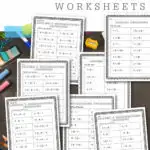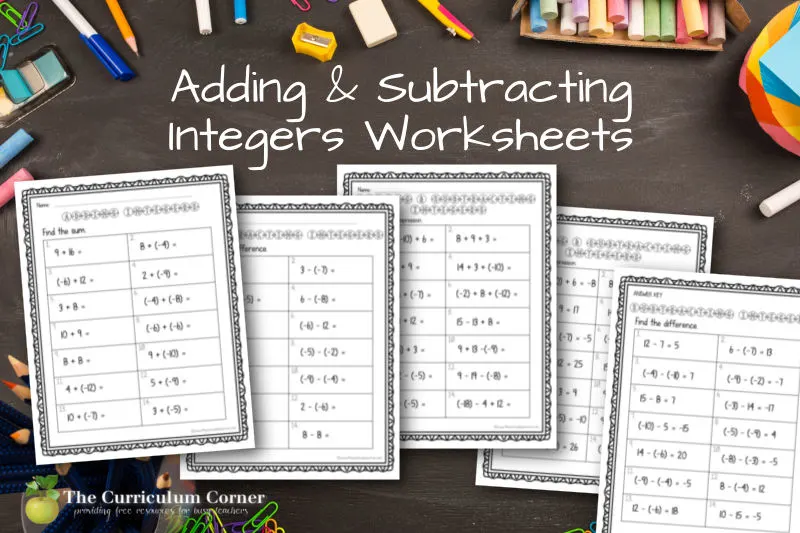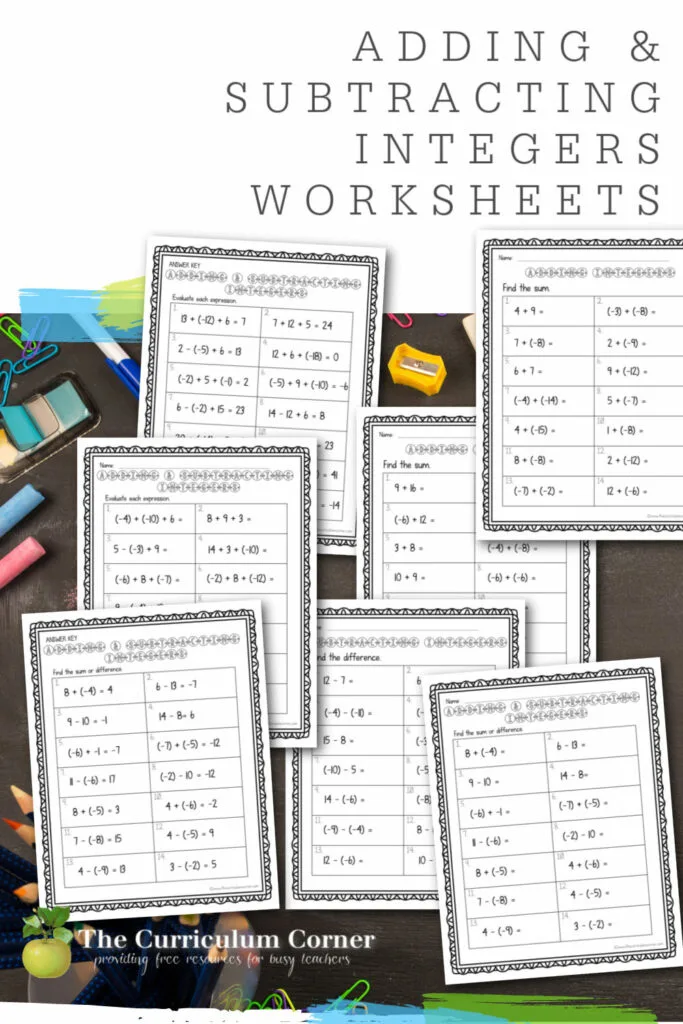This download of adding and subtracting integers worksheets contains ten practice pages with answer keys.
You can add this collection of adding and subtracting integers worksheets to you algebra collection for sixth grade math practice.
This is another free resource for teachers and homeschool families from The Curriculum Corner.
What are the rules for adding and subtracting integers?
Are you a parent helping your child with homework tonight and can’t remember the rules from sixth grade math class? Read below to help you get on track!
First of all, let’s answer this question: What is an integer?
An integer is a whole number – it is not a fraction. It can be a negative number or a positive number or zero. It cannot be a decimal!
This means that when someone asks you what an integer is, the easiest response is that it is a whole number.
An interesting fact: adding an integer and its opposite will always equal zero.
For example 5 plus negative 5 is zero.
Now, let’s look at working with integers when you are asked to add or subtract.
Remember, the first rule is that adding an integer and its opposite will always equal zero.
3 + -3 = 0
Adding a positive number plus a positive number will always give you a positive number.
7 + 4 = 11
Adding a negative number plus a negative number will always give you a negative number.
When you add a negative number plus a positive number, the number with the larger absolute value will determine if your answer is negative or positive.
-8 + 4 = -4
(Above, the absolute value of 8 is greater than the absolute value of 4.)
-3 + 9 = 6
(Above, the absolute value of 9 is greater than the absolute value of 3.)
About these adding and subtracting integers worksheets
These free sixth grade math worksheets are designed to provide your students with practice.
The pages can be used once the skill has been taught – they contain no parts that will teach the materials.
Because these pages are intended for review and practice, I have included 12 problems on each. Many of the pages I have looked at have a much larger number of problems.
I am a firm believer that worksheets should not contain too many problems. This is for two reasons –
- Students who already know how to solve the problems do not need 30 problems to show this. They should be able to demonstrate their mastery in a smaller number of problems.
- If students do not understand the skill, they will understand it no more on problem one than problem 30. However, you will cause frustration as they struggle through each problem.
- Other students might be beginning to understand and do need the practice. Twelve problems should be enough to give them some practice. Plus, it will let you see where they might still need some help.
There are a total of ten pages. You will find these first followed by the answer keys.
The pages begin with isolated addition or subtraction then progress to more difficult problems.
You can download this math set here:
As with all of our resources, The Curriculum Corner creates these for free classroom use. Our products may not be sold. You may print and copy for your personal classroom use. These are also great for home school families!
You may not modify and resell in any form. Please let us know if you have any questions.
You may not modify and resell in any form. Please let us know if you have any questions.



